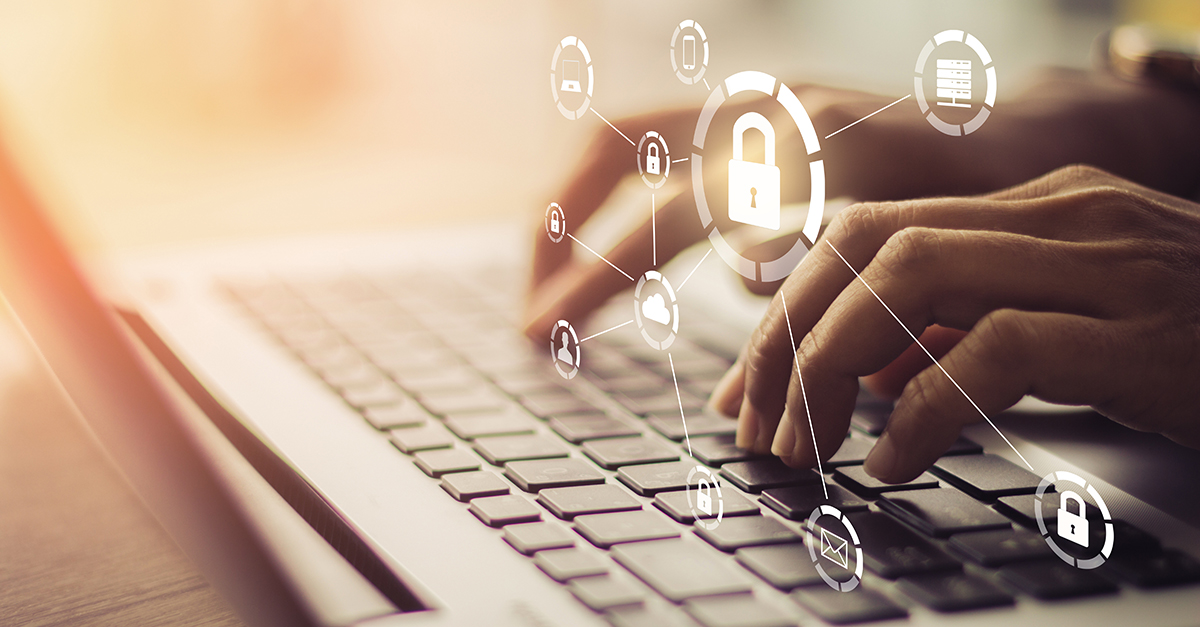
No one is immune to a data breach. From universities and hospitals to corporate giants and government agencies, almost every organization has encountered a security incident. Data security breaches not only expose sensitive information but can also cripple businesses. You need the right physical and digital security measures to safeguard critical information.
If you want to protect your data, you should know what to look out for. Learning about the top security breaches can help you better prepare against attacks. So, how do security breaches commonly occur? In this post, we’ll discuss the most common ways intruders infiltrate an organization and provide solutions to help you reduce the risk of a data breach.
What is a Data Breach?
A data breach is a security incident in which confidential information has been accessed without authorization. The information can be financial data, medical records, or trade secrets. Data security breaches can be physical or electronic. While most data leaks are attributed to hacking, theft of hard drives and physical files also compromise sensitive information.
Breaches typically occur when an unauthorized individual is able to bypass digital or physical security controls. Despite employing modern security systems, many institutions are still vulnerable to infiltration by hackers and intruders. According to a 2019 Ponemon Institute Report, the odds of experiencing a data breach is 25% over a two-year period.
Why is Data Protection So Important?
Whether it’s customers’ personally identifiable information (PII) or commercial secrets, safeguarding sensitive data is crucial to running a successful business. For many organizations, a security breach can be a disaster. In addition to the immediate financial impact, a data security breach can undermine trust in your brand and make you lose competitive advantage.
From class-action lawsuits to lost customers, failing to protect data inflicts significant costs and consequences on businesses. In 2021, the average cost of a data breach was $4.24 million. Leaks and attacks are even costlier in heavily regulated industries. The cost of a data breach is $6.45 million for healthcare organizations and $5.86 million for financial service institutions.

Now that you know why information security is so important, how can you keep your data safe?
Although you can’t completely avoid data security breaches, you can mitigate the risk of it happening. With the right security measures in place, you can shield confidential data from digital and physical compromise. Here are the top security breaches and how to prevent them.
Distributed Denial-of-Service
Distributed denial-of-service (DDoS) is a cyberattack that shuts down a network by flooding it with traffic from multiple sources. This overwhelms the system and makes it unavailable to its intended users. While a DDoS attack doesn’t constitute a data security breach, the tactic is often used as a smokescreen to distract the IT department from network infiltration attempts.
DDoS attacks are tricky to identify because they can be indistinguishable from legitimate traffic spikes. Although they can’t be prevented, you can employ rate limiting, network diffusion, and web application firewalls to mitigate the impact of the attack. Pay careful attention to network intrusion attempts that might be running in parallel to the attack to prevent a security breach.
Password Hacking
Many employees create simple passwords that are easy to remember. In addition to weak passwords, one in three employees share their credentials with co-workers. These poor password practices are behind many data security breaches. According to a Verizon Data Breach Investigations Report, 81% of hacking-related breaches used weak or stolen passwords.
Despite being one of the top security breaches, password hacking is quite easy to prevent. Setting up two-factor authentication (2FA) can help you deter unauthorized access. 2FA employs a two-step verification process to authenticate the user. After entering their password, a security code is sent to the user’s mobile phone to verify their identity and grant them access.
Physical Data Theft
When talking about averting data security breaches, most people automatically think of antivirus software. But cyberattacks are not the only way data is stolen. Almost 10% of malicious breaches are caused by a physical security compromise. Lax physical security in your server room or other privileged areas of your facility can lead to the theft of data and hard drives.
Adopting biometric access control systems like the Alcatraz AI can help you prevent physical data theft by intruders. Our facial authentication solution employs artificial intelligence and tailgating detection technology to bar unauthorized entry into secured spaces. By providing access only to approved individuals, Alcatraz AI keeps sensitive assets in trusted hands.
Phishing Scams
You probably know about or have been a victim of a phishing scam. Phishing is a form of cybercrime in which hackers attempt to steal information from users by tricking them into revealing sensitive data or downloading malicious software like ransomware. Because the emails and websites mirror those of reputable companies, many people fall for this scam.

In 2020, phishing scams were the most common cause of data security breaches globally. How can you avoid falling prey to this top security breach? The best way to protect your organization from phishing attacks is to teach your employees how to identify suspicious emails. Implement an ongoing cybersecurity training program to keep your staff educated on the latest threats.
Information Misuse
Security breaches don’t always result from malicious intent. Accidents and negligence can also lead to compromised data. Sometimes an employee stumbles into confidential information they should not have seen. Or a member of your staff handles a document without following the correct procedures. These instances can lead to information leaks and data loss.
Improper use of information is responsible for more than one in twelve data security breaches. These incidents often occur because the organization doesn’t have appropriate access controls in place. Alcatraz AI will help you set different access privileges for every employee. This will prevent low- and mid-level staff members from seeing or using sensitive information.
Malware Attacks
Malware ⏤ short for malicious software ⏤ is a blanket term for harmful programs that are designed to control, spy on, or damage computer systems. There are many different types of malware. These include viruses, worms, trojans, spyware, and ransomware. Malware can be used to steal data, disrupt operations, or extort money from the victim.
Malware attacks are among the top security breaches. More than 17% of data security breaches are attributed to malware infections. You need a multi-pronged strategy to keep this ever-growing threat at bay. Installing anti-virus software, using non-administrator accounts, and updating your operating system regularly can decrease the risk of a malware breach.
Insider Threats

Many organizations are so preoccupied with neutralizing external attacks that they overlook insider threats. Employees know the ins and outs of how an organization operates. A malicious insider can inflict significant damage on your establishment. The Sony Pictures data breach ⏤ known as the hack of the century ⏤ was allegedly conducted by disgruntled employees.
Unauthorized personnel are involved in 30% of data security breaches. Creating a zero-trust security architecture is essential to protect high-value information from disloyal employees. By requiring all employees to be authenticated, authorized, and continuously validated before granting access, Alcatraz AI fosters a zero-trust environment to help you reduce insider security threats.
Improve Your Data Security With Alcatraz AI
Despite using the latest cybersecurity tools, data breaches are on the rise. That’s because in addition to digital security, you must also protect your data physically. Restricting physical access to sensitive hardware can shield sensitive data from unauthorized personnel. You need a modern physical security system alongside your cybersecurity solutions to thwart data breaches.
With real-time verification, multi-factor authentication (MFA), and tailgating detection, Alcatraz AI is the best physical security solution you can find. Our cutting-edge technology is easy to set up and provides a seamless user experience. Sign up for a free demo now to see firsthand how the Alcatraz Rock can improve your facility’s data security.
← Previous -- Next →
Tag(s):
Blog
Other posts you might be interested in
View All Posts
27 min read
| April 28, 2025
Implementing Zero Trust Security for Data Center Protection
Read More
Blog
4 min read
| October 15, 2021
Proven Ways to Prevent Data Breaches
Read More
Press Release
5 min read
| November 12, 2024
Alcatraz AI Publishes New Security Best Practices for Data Centers Amidst Projected Growth in 2025
Read MoreSubscribe to email updates
Additional content around the benefits of subscribing to this blog feed.


